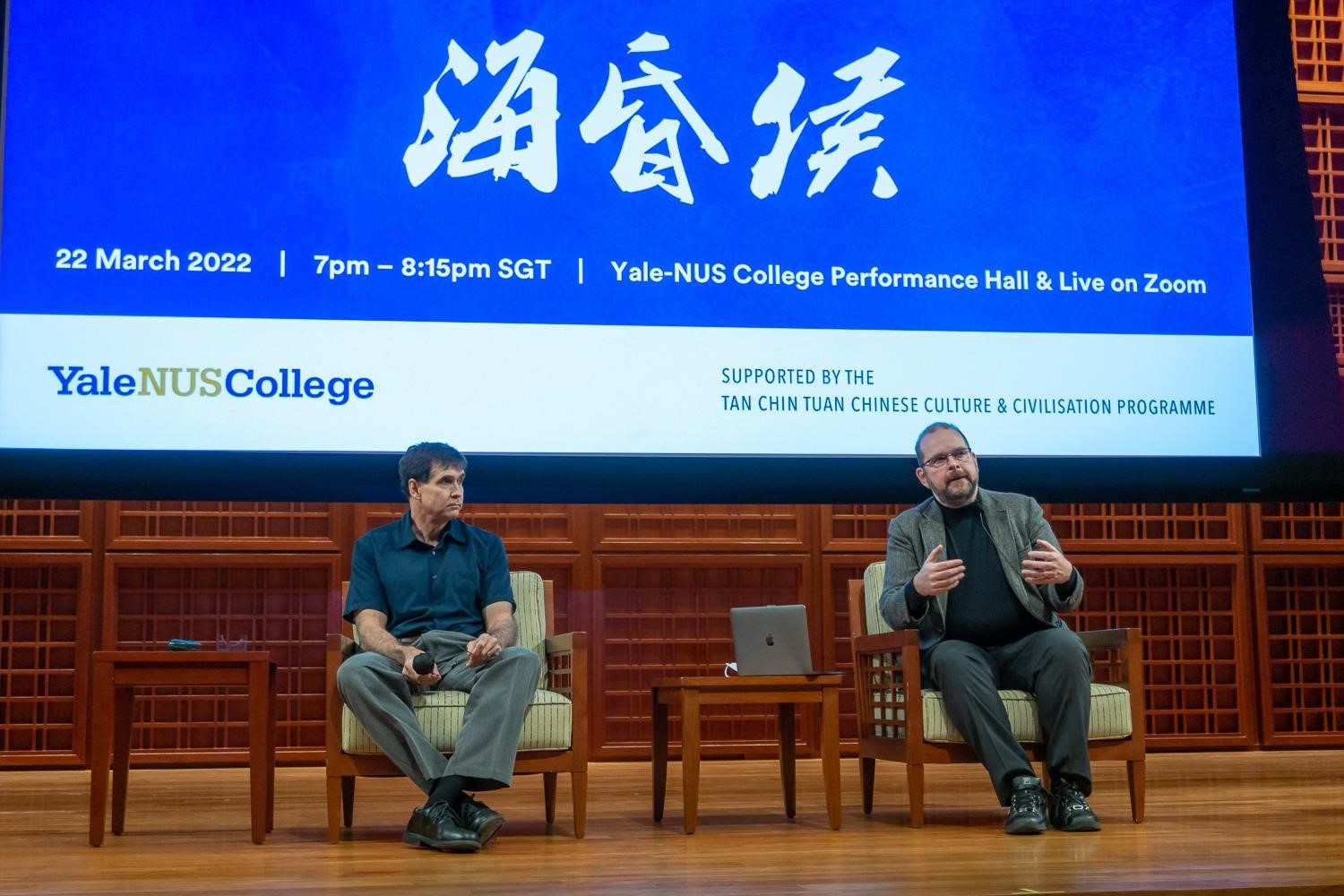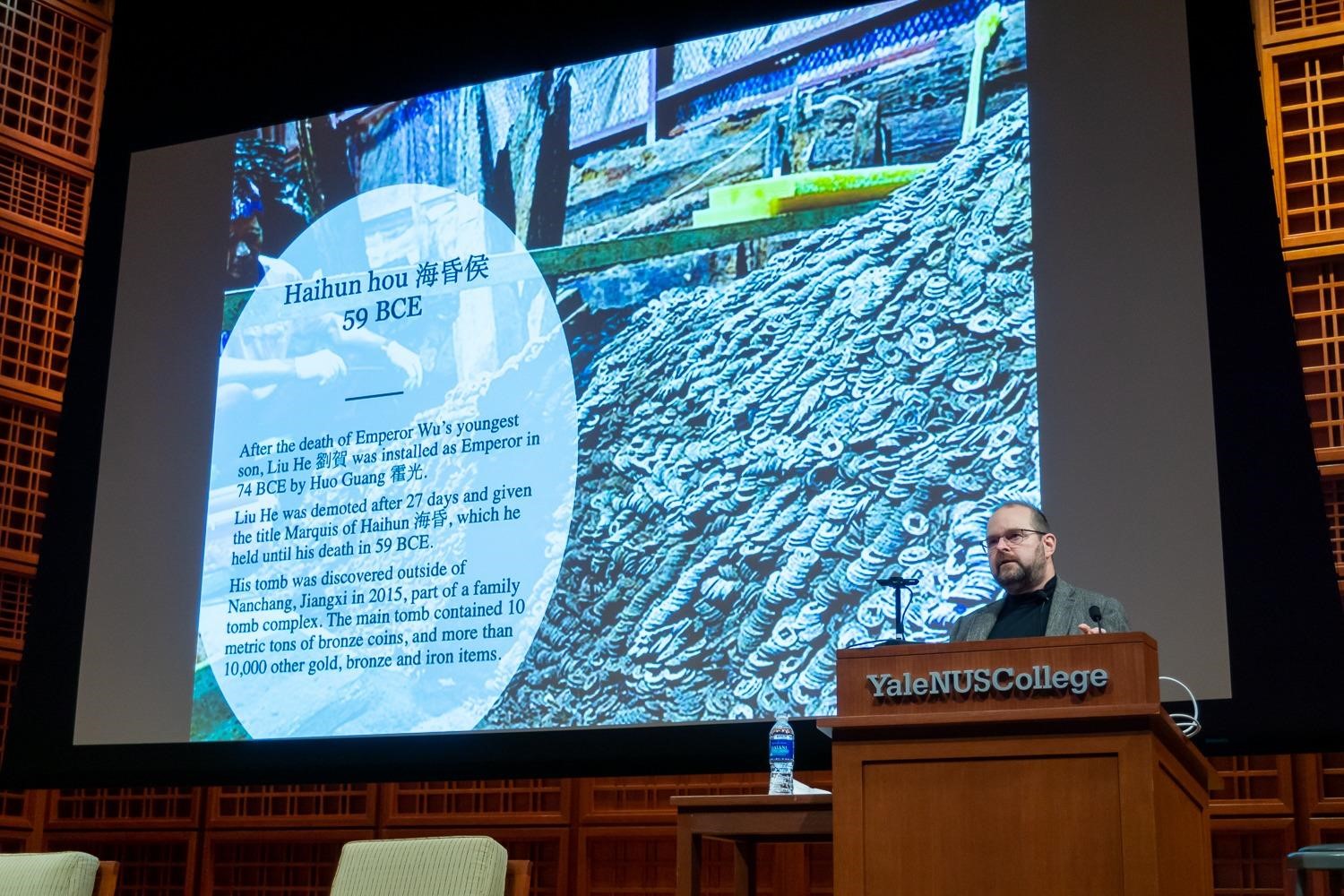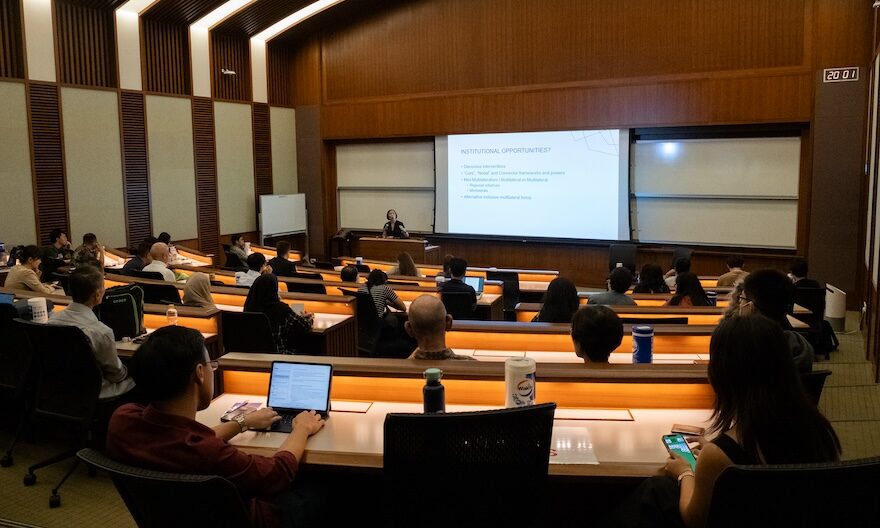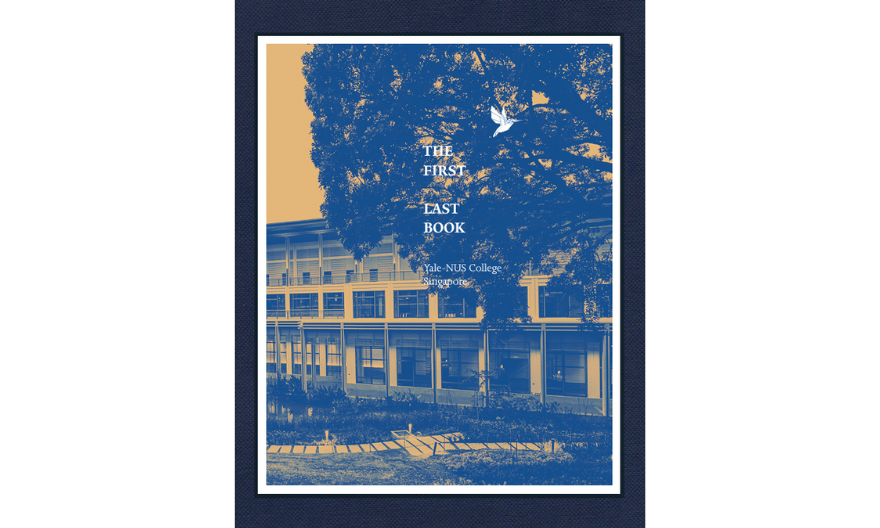New views of Confucius and his disciples from the Han Dynasty
Public lecture by Professor Mark Csikszentmihalyi illuminates the significance of ancient relics uncovered in a tomb in Jiangxi Province
 Professor of Humanities (Chinese Studies and History) Scott Cook and Professor Mark Csikszentmihalyi at the lecture. Image by Glen Ang for Yale-NUS College.
Professor of Humanities (Chinese Studies and History) Scott Cook and Professor Mark Csikszentmihalyi at the lecture. Image by Glen Ang for Yale-NUS College.
On 22 March 2022, Yale-NUS College hosted a public lecture by Marjorie Meyer Eliaser Chair of International Studies and Professor of East Asian Languages and Literatures at the University of California at Berkeley, Mark Csikszentmihalyi. The lecture, titled “New Views of Confucius and his Disciples from the Han Tomb at Haihunhou”, examined recently excavated materials from a tomb in Jiangxi Province, China and assessed their roles in deepening the understanding of Confucianism practice in the Han Dynasty.
Prof Csikszentmihalyi opened the event by explaining the historical context behind the tomb. Excavated in 2015, the tomb was the final resting site of Liu He, an ill-fated emperor of China. Originally the Prince of Changyi, Liu He was installed as the emperor of the Han Dynasty in 74 BC, but was deposed just 27 days later. Liu He was also demoted to the rank of Marquis, and sent back to Haihun (now known as Jiangxi Province). Therefore, his tomb is known as the Haihunhou (海昏侯) Tomb, or the tomb of the Marquis of Haihun.
 Prof Csikszentmihalyi delivering his lecture, with a slide focusing on the historical context and significance of the tomb. Image by Glen Ang for Yale-NUS College.
Prof Csikszentmihalyi delivering his lecture, with a slide focusing on the historical context and significance of the tomb. Image by Glen Ang for Yale-NUS College.
During the lecture, Prof Csikszentmihalyi discussed the bamboo slips written with the Analects, an ancient book comprising of a collection of sayings attributed to Kongzi 孔子 (Confucius). He noted that the version of the Analects found in the tomb was a variant version of the text, known as Qi Lun, or the Qi version. This version was thought to be lost to time, even though it had been mentioned by other ancient texts. The rediscovery of the Qi Lun therefore points more conclusively to its existence, and the fact that the Qi Lun was in circulation during the Han dynasty.
Prof Csikszentmihalyi also explored a second relic of significance: an elaborate and large bronze mirror stand. The frame contained “capsule biographies” of Kongzi and his disciples, describing their basic information with a narrative that illustrated their characters.
The discussion focused on one biography which stood out. Zigong was a notable disciple of Kongzi who appeared in the Analects as well as Sima Qian’s Records of the Great Historian. In Sima Qian’s biographies, Zigong was described quite negatively, depicted as a clever and sharp man who was money-minded. In stark contrast, the capsule biography on the excavated frame described Zigong in an almost reverent light. This discrepancy indicated that there were multiple sources for Kongzi disciples’ biographies at the time of writing, Prof Csikszentmihalyi explained.
Concluding the lecture, Prof Csikszentmihalyi presented two hypotheses that explained why these luxurious items were placed in the tomb of the debauched king in the first place: some argued that he might be furnished with these Confucius texts in a punitive or rehabilitative manner, to aid him in “going back to the path” after death. The alternative argument was that these were items from Liu He’s early life, indicating that the Han ruling elite were clearly concerned with Confucius’ teachings, and used the stories of Kongzi and his disciples as a proxy for lessons about the ruler and his officials.
Prof Csikszentmihalyi shared that the historical relics uncovered from Liu He’s tomb helped to heighten understanding of the Han Dynasty, and they gave a richer insight into the construction of stories and texts during the Han era. Compared to other earlier accounts of Kongzi, which celebrated him for being a successful official or advisor, the Han ruling elite placed more emphasis on the skills and characters of his subordinates.
The lecture is held under the auspices of the Tan Chin Tuan Chinese Culture and Civilisation Programme, which aims to increase the understanding of China and Chinese culture among the community. The Programme also supports the Chinese Language Scholarship, a geopolitics series that focuses on the challenges around United States-China strategic competition, academic conferences as well as other co-curricular activities at Yale-NUS.
Watch the full lecture here:




